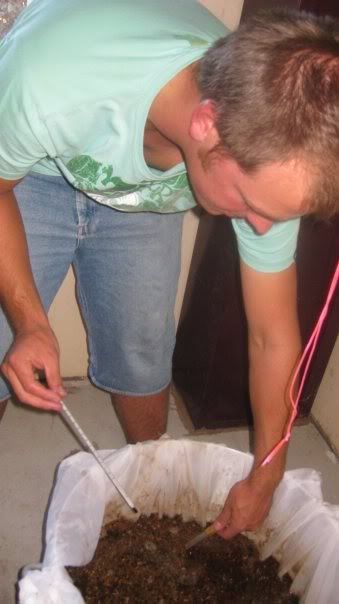HLT is on top, used to heat water for mashing and sparging. As mentioned before, you'd want to be able to hold around 40L for a 20L batch. You could get away with a smaller vessel (refill and heat the sparge water during the mash), but a bigger vessel allows for upsizing when you realise you want to brew 40L at a time!
Next is the mash tun, where you want to use the bazooka screen. I can't comment on these as I use a false bottom, but I love the false bottom and have absolutely no issues with it. Whatever you use, you'd want to connect it to a valve of some sort, most people use ball valves. And any tubing within the mash tun must be strong enough and resistant enough to not collapse under pressure. And food grade. Don't limit the mash tun to 20L batches. After a year or so you'll want to brew double batches, and you won't want to be buying new equipment. Look for 10 gallon gatorade coolers, or use a converted keg, legally obtained of course. Either of these should be able to handle double batches.
Finally, the boil kettle. Again converted kegs are options, anything less than 50L kegs will make double batches difficult as you need to end up with 40L wort, and if you factor in evaporation, losses to trub and hops, and headspace required to keep a rolling boil (without boiling over), 50L is about the minimum you can get away with. Even then, I have to add ~10L of cooled boiled water to make up the volume difference. So you'd be better off scoring an 80L keg or buying a 60-80L ally/SS pot for the boil.
Benefit of conical fermenters is that you can rack the yeast off easily after the fermentation is finished. This means that the yeast is harvested in a slightly more sanitary fashion, and primary and secondary fermenting can be done in the one vessel (again, more sanitary and less risk of oxidation). And they are shiny. The down side, they cost a lot and they aren't easy to move around like a fermenter is.















